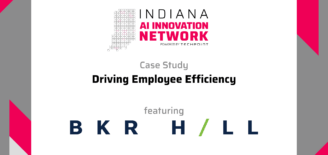Digital Marketing and The Sales Funnel
To stay relevant and compete in today’s ever-changing digital landscape, having a base knowledge of how digital marketing and advertising works is important. In order to obtain that base knowledge, business owners and marketers often find themselves reading through a list of buzzwords, catchphrases and slogans.
 While on paper these catchphrases and slogans sound promising, in practical application, business owners are finding the results to be considerably underwhelming. So, how do business owners determine which digital strategies are best suited for their business? The first step is understanding what strategies are available and where in the sales funnel they touch potential customers.
While on paper these catchphrases and slogans sound promising, in practical application, business owners are finding the results to be considerably underwhelming. So, how do business owners determine which digital strategies are best suited for their business? The first step is understanding what strategies are available and where in the sales funnel they touch potential customers.
Let’s take a look at some of the more mainstream forms of digital advertising currently available as they relate to the sales funnel:
Top of the funnel – Brand Awareness Phase
Programmatic – According to Forbes, programmatic advertising is the automation of the buying and selling of desktop display, video, FBX (Facebook Exchange), and mobile ads using real-time bidding.
Display – a form of images-based online advertising where a message is displayed on a specific web page, these ads come in different sizes but usually appear in a box format on the top, bottom or side of a web page.
Middle of the funnel – Interest Phase
Digital Radio/Digital TV – The opportunity to run advertisements across digital radio/TV platforms (Pandora, Spotify, Hulu, Netflix, etc.), these forms of advertisements can be radio spots, TV commercials, banner ads, or textual-based ads.
Social Media Advertising – Advertisements that allow for you to increase your overall brand awareness among social platforms (Facebook, Twitter, LinkedIn Pinterest, etc). This form of digital advertising can be highly-targeted based on specific users’ profiles, interests, skill sets, etc., either driving “Likes” and “Followers” or taking users off-site to a desired landing page.
Digital Video – This format allows for video ads to be run before other video content being viewed within YouTube or throughout other monetized websites with video content. Video ads can also be highly targeted based on interests or past browsing history.
In-App Advertising – Advertising that appears while users are engaging within a specific app. These ads show up much like banner ads except they can be an image, video or rich media files, and can offer a one-click app install without leaving the in-app environment.
Bottom of the funnel – Buying Phase
Re-Marketing – Remarketing is a from of display advertising that lets you reach people who have previously visited your site, and show them relevant ads across the web or social advertising platforms. When people leave your site without buying anything, for example, remarketing helps you connect with these potential customers again.
Direct Buy – Sites like Amazon.com now allow you to directly market to consumers who are textually searching for specific keywords or products on Amazon, purchasing products through Amazon or adding items to their Amazon wish lists. The ability to reach users who are in a “buying mode” allow for higher conversions than other brand awareness platforms.
Paid Search/PPC – PPC ads are what you see at the top of the page when you search for something on a search engine like Google, Bing or Yahoo. Ad placement is is determined by how much budget you have to rank for the keywords you (and your competitors) are targeting, as well as the relevancy and quality of your keywords.
A general example of how a digital sales funnel looks is represented below. This funnel allows for you to determine how much top level (brand awareness) is needed to trickle down the middle and bottom of the funnel in order to convert.

Regardless of which strategies you choose, they are best executed within an integrated campaign that highlights digital advertising combined with organic social media and public relations efforts. This is the approach we take with our clients at BLASTmedia, and we are able to hold customers’ hands as they walk through the buying process online. With how many options are available within the digital space, it is imperative to know which digital advertising options will generate brand awareness and which options will create conversions – effectively setting expectations in your marketing investments and setting you up for success.


